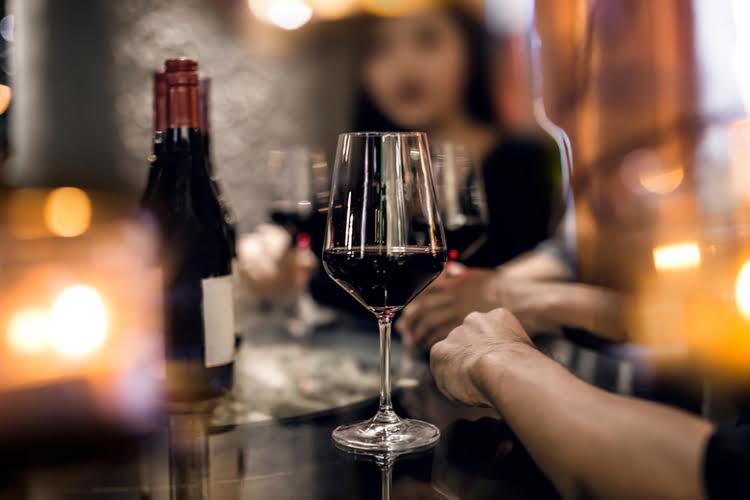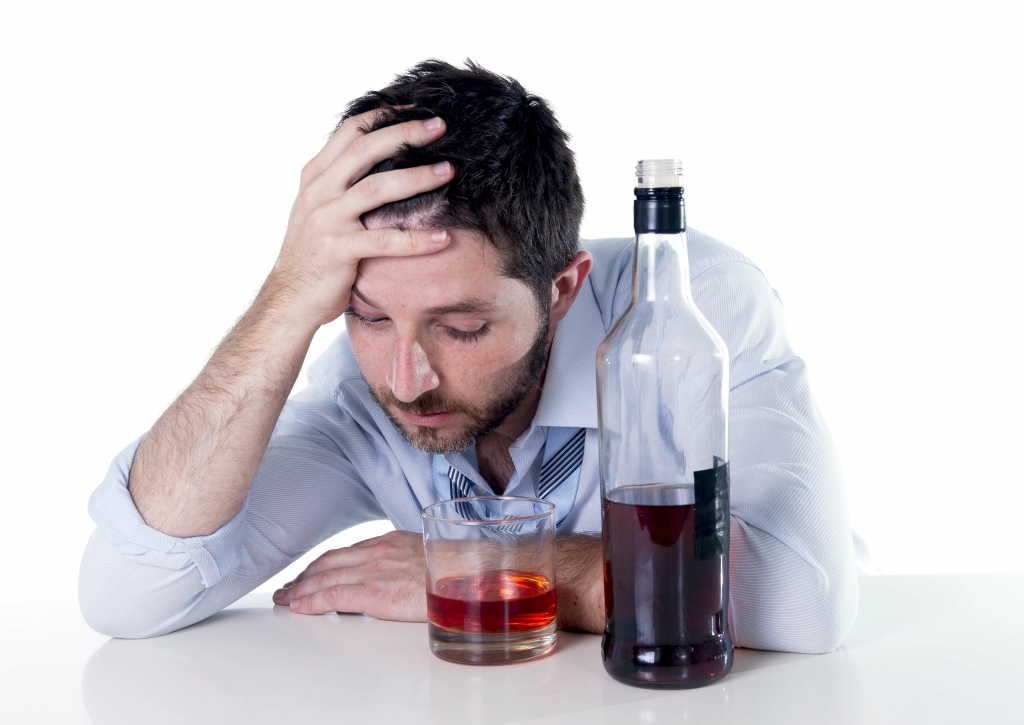
In the chart, we see estimates of the alcohol-attributable fraction (AAF), which is the proportion of deaths that are caused or exacerbated by alcohol (i.e., that proportion that would disappear if alcohol consumption was removed). We see that the proportion of deaths attributed to alcohol consumption is lower in North Africa and the Middle East and much higher in Eastern Europe. As we see, following prohibition, levels of alcohol consumption returned to similar levels as in the pre-prohibition period.
Data on the prevalence of binge drinking by age and gender in the UK can be found here, and trends in heavy and binge drinking in the USA can be found here. Alcohol consumption – whilst a risk factor for a number of health outcomes – typically has the greatest negative impacts when consumed within heavy sessions. In a related chart, you can see the share who drink alcohol by gender and age group in the UK. At the end of this topic page, you will find additional resources and guidance if you, or someone you know, needs support in dealing with alcohol dependency. Drug use disorders are often classified within the same category as mental health disorders — research and data on mental health can be found on our topic page here. While not exactly a “flavor,” packs of multiple flavors were the most popular, followed by iced tea-flavored hard seltzers and black cherry.

NielsenIQ reports that the “claim to watch” for beer/flavored malt beverages/cider is “carb-free,” for wine it is “calorie conscious,” and “no added sugar” for spirits. For this project, we tapped into the Bureau of Labor Statistics’ Consumer Expenditure Survey which is conducted each year. Data were collected from 1996 to determine the average price of alcohol over the last decade, along with a more granular look at 2016 alcohol expenditures for various demographics. The map shows the share of all road traffic deaths attributed to alcohol consumption over the national legal limit for alcohol consumption. At the end of this topic page, we provide a number of potential sources of support and guidance for those concerned about uncontrolled drinking or alcohol dependency.
What is a standard drink measure?
While 66% of beer sales were attributed to “large, non-craft domestic” companies in 2021, imports accounted for 21% and craft beer at 13%. The beer category (excluding hard seltzers and flavored alcohol beverages) is “expected to decrease by volume through 2025;” however, craft beer volumes are “expected to increase.” NielsenIQ researchers did find that it was not an “all or nothing” decision regarding non-alcoholic purchases, but rather 78% of those who purchased non-alcoholic beverages also purchased beer, wine, and spirits with an alcoholic beverage content. A century ago, some countries had much higher levels of alcohol consumption. In France in the 1920s, the average was 22.1 liters of pure alcohol per person per year. Which demographics have driven increased spending on alcohol over the 20 years studied?

“Emerging” hard seltzer flavors include margarita, punch, and ranch water. IWSR indicates that “RTD growth has slowed due to a highly saturated hard seltzer segment.” If you or someone you love is struggling with a drinking problem or the use of other substances, the personal crack addiction signs and symptoms of crack cocaine use price you pay can be severe. Our team of treatment experts and advisors can help you evaluate your options so that you can choose ethical and effective care. To meet our team of clinicians or learn more about our resources and programs, explore our website today.
Alcohol consumption
While the growth rate for vodka was less than that of the other four liquors, sales by volume accounted for 78.1 million 9-Liter cases. In contrast, the sales volume for cocktails/RTDs, the next largest category, was 36.6 million cases. The cost of excessive alcohol use in the U.S. was almost a quarter trillion dollars in 2010. Implementing effective community-based interventions can reduce excessive drinking and its costs. When we look at national averages in this way, there is no distinct relationship between income and alcohol consumption. As shown by clusters of countries (for example, Middle Eastern countries with low alcohol intake but high GDP per capita), we tend to see strong cultural patterns that tend to alter the standard income-consumption relationship we may expect.
- With each new year comes a new set of alcohol beverage consumption statistics, trends, and predictions.
- The charts show global consumption of wine, first in terms of wine as a share of total alcohol consumption, and then the estimated average consumption per person.
- For this project, we tapped into the Bureau of Labor Statistics’ Consumer Expenditure Survey which is conducted each year.
- According to Numerator, 90% of Millennials purchased alcohol during the 52-week period ending in May 2021, compared to 84% of 21 and older Gen Z shoppers.
- All visualizations, data, and code produced by Our World in Data are completely open access under the Creative Commons BY license.
- Similarly, hard liquor suppliers have enjoyed record sales in recent years, driven by consumer interest in high-end spirits.
Global trends on alcohol abstinence show a mirror image of drinking prevalence data. This is shown in the charts as the share of adults who had not drunk in the prior year and those who have never drunk alcohol. U.S. consumer demand for beer continues to shift to “premium options and new and exciting alternatives” when selecting the beverage to consume off-premise. Such offerings that have garnered consumer attention include craft beers (annual production of fewer than 6 million barrels) and imported and domestic super-premium beers (which were categorized in 2012 as priced at $22 and higher per case). Other formats that decreased in growth during this period included 500 mL, 1 L, and larger containers. Formats that experienced an increase in growth rate were 300 mL (28.3%), 187 mL (6.2%), 250 mL (5.8%), and other smaller containers.
The most important key figures provide you with a compact summary of the topic of “Alcoholic beverages industry worldwide” and take you straight to the corresponding statistics. Whilst the World Health Organization (WHO) and most national guidelines typically quantify one unit of alcohol as equal to 10 grams of pure alcohol, the metric used as a ‘standard measure’ can vary across countries. Global data on the prevalence and break the cycle of addiction with these strategies to keep dopamine in check effectiveness of alcohol use disorder treatment is incomplete. Alcohol use disorder, which includes alcohol dependence, is defined in the WHO’s International Classification of Diseases (available here). Alcohol use disorder (AUD) refers to the drinking of alcohol that causes mental and physical health problems. We also find correlates in drinking patterns when we look at groupings of income, education or work status.
Alcohol segments
Decanter’s January 2022 “Top wine Trends for 2022” listed the average consumer’s “inability…to afford” wines from Burgundy, Bordeaux, and Champagne. Instead, there has been a shift to lesser-known regions, including Santa Barbara, California, the Canary Islands and Gredos in Spain, Corsica, Slovenia, and Switzerland. Overall, the theme is that consumers will start looking for new wines, new wine regions, and swapping Champagne with Cava and other sparkling wines. Between 2019 and 2022, while overall growth in the number of U.S. wineries grew 10% can alcohol make your hot flashes feel worse during menopause and the number of Californian wineries grew 7%, those in the Eastern U.S. (27 states east of the Mississippi River) grew 13%, accounting for 28% of the total wineries in the U.S. Of the states in the region, New York, Pennsylvania, and Virginia experienced the greatest increase in the number of wineries with growth rates of 14, 12, and 10%, respectively (Adams, 2022). Excessive alcohol use cost states and the District of Columbia (D.C.) a median of $3.5 billion in 2010, ranging from $488 million in North Dakota to $35 billion in California.
This data is based on estimates of prevalence and treatment published by the World Health Organization (WHO). The chart shows direct death rates (not including suicide deaths) from alcohol use disorders across the world. The death rates are typically higher in Eastern Europe and lower in North Africa and the Middle East. The scatter plot compares the prevalence of alcohol use disorders in males versus that of females.
Further reportsGet the best reports to understand your industry
Further discussion on these risk factors can be found on our topic page on drug use. The first map shows this in terms of spirits as a share of total alcohol consumption. In many Asian countries, spirits account for most of total alcohol consumption. The charts show global consumption of spirits, which are distilled alcoholic drinks, including gin, rum, whisky, tequila, and vodka. With the change country feature, it is possible to view the same data for other countries. Sweden, for example, increased the share of wine consumption and, therefore, reduced the share of spirits.
We will always indicate the original source of the data in our documentation, so you should always check the license of any such third-party data before use and redistribution. This shows the expenditure on alcohol in the United States, differentiated by where the alcohol has been purchased and consumed. The “seltzer boom brought variety and flavor to customers,” which encourages them to be more willing to try new flavors in other beverage categories.
When segmented by age range, the net positive change for those under 40 years was 14% compared to 2% for those aged 40 and older. From another report, compared to the first half of 2021, the volume of premium-and-above Prosecco grew 8% in the first half of 2022. When it comes to your health and hard-earned money, it’s certainly an experiment worth trying. Much of this trend is attributable to changing prices that have climbed steadily across the country since 1996.
By default, the data for France is shown – in recent decades, here, the share of beer consumption increased to make up around a fifth of alcohol consumption in France. As the map shows, the average per capita alcohol consumption varies widely globally. Based on the 52 weeks ending November 5, 2022, off-premise hard cider sales decreased by 2.1%. While regional/local ciders, which account for 54% of the total hard cider sales, experienced positive growth (a 5.7% increase), national cider brands decreased in growth by 8.9%. What “better-for-you” related claims should industry members be aware of that are important to consumers?
Data on alcohol expenditure is typically limited to North America, Europe, and Oceania. The net positive change for Cabernet Sauvignon and Red Blends was 26% and 33%, respectively, for men and 10% and 40% for women. The net positive change for Red Blends was 22% for those under 40 years of age and 36% for those aged 40 and older. The net positive change for Sauvignon Blanc was 6% for women and 2% for men.



